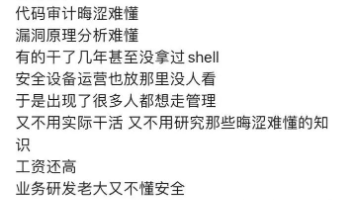【带你 langchain 双排系列教程】11. LangGraph快速构建Agent工作流应用
在当今数字化时代,智能系统在各个领域发挥着越来越重要的作用。借助LangGraph,我们能够快速构建Agent工作流应用,让智能系统变得更加高效和智能。本文将带您从零开始,逐步构建一个基于LangGraph的智能客服系统,并展示如何通过测试和优化来提升系统性能。通过本文的介绍,您已经了解了如何使用LangGraph快速构建Agent工作流应用。从智能客服系统的实现,到测试与优化,再到应用场景的拓展
文章目录 1.简介 2.环境搭建 3.从零构建一个智能系统 4.测试与优化 5.应用场景拓展 6.总结
1.简介
在当今数字化时代,智能系统在各个领域发挥着越来越重要的作用。借助LangGraph,我们能够快速构建Agent工作流应用,让智能系统变得更加高效和智能。本文将带您从零开始,逐步构建一个基于LangGraph的智能客服系统,并展示如何通过测试和优化来提升系统性能。
2.环境搭建
在开始构建智能系统之前,您需要确保已安装必要的依赖。以下是一些常见的依赖包及其安装方法:
bash复制
pip install langchain langgraph
此外,您还需要准备一个知识库,并确保您已配置好NLP模型,如OpenAI的GPT-3.5-turbo或类似的模型。
3.从零构建一个智能系统
3.1 系统规划
我们的目标是构建一个智能客服系统,能够回答用户的问题、识别用户的情绪并提供解决方案。该系统的核心功能包括:
- 意图识别:分析用户的输入,判断用户的意图。
- 知识库查询:根据用户的意图,从知识库中检索相关信息。
- 解决方案生成:基于检索到的信息,生成解决方案。
3.2 代码实现
以下是一个简单的智能系统实现示例:
Python复制
from langgraph.graph import StateGraph, State
import json
class CustomerServiceState(TypedDict):
conversation_history: list
current_intent: str
user_info: dict
resolved: bool
class CustomerServiceGraph(StateGraph):
def __init__(self):
super().__init__()
self.add_node("greeting", self.greet_customer)
self.add_node("analyze_intent", self.analyze_intent)
self.add_node("query_knowledge_base", self.query_knowledge_base)
self.add_node("generate_solution", self.generate_solution)
self.add_node("manage_emotion", self.manage_emotion)
async def greet_customer(self, state: CustomerServiceState):
"""欢迎客户"""
response = await self.llm.generate(
prompt=f"""
历史对话:{state['conversation_history']}
任务:生成合适的欢迎语
要求:
1. 保持专业和热情
2. 表示愿意提供帮助
3. 简要介绍服务范围
"""
)
state['conversation_history'].append(f"Agent: {response}")
return state
async def analyze_intent(self, state: CustomerServiceState):
"""理解用户意图"""
response = await self.llm.generate(
prompt=f"""
历史对话:{state['conversation_history']}
任务:分析用户问题并确定意图
输出格式:
{{
"intent": "查询订单/商品推荐/售后服务/其他",
"confidence": 0.9,
"details": "用户问题的详细描述"
}}
"""
)
state['current_intent'] = json.loads(response)
return state
async def query_knowledge_base(self, state: CustomerServiceState):
"""从知识库中查询答案"""
intent = state['current_intent']
query = f"根据用户意图{intent}查询知识库"
response = await self.llm.generate(
prompt=f"""
历史对话:{state['conversation_history']}
任务:{query}
要求:
1. 返回与问题最相关的信息
2. 确保信息的准确性和完整性
"""
)
state['knowledge_base_result'] = response
return state
async def generate_solution(self, state: CustomerServiceState):
"""生成解决方案"""
solution = f"根据知识库查询结果{state['knowledge_base_result']},为您提供解决方案"
state['conversation_history'].append(f"Agent: {solution}")
state['resolved'] = True
return state
async def manage_emotion(self, state: CustomerServiceState):
"""管理用户情绪"""
if state.get('user_emotion') in ['negative', 'neutral']:
response = await self.llm.generate(
prompt=f"""
历史对话:{state['conversation_history']}
任务:根据用户情绪生成安抚回复
"""
)
state['conversation_history'].append(f"Agent: {response}")
return state
async def handle_customer_query(user_id: str, message: str):
# 加载或创建状态
state = state_manager.load_state(user_id) or {
"conversation_history": [],
"current_intent": None,
"user_info": {},
"resolved": False
}
# 添加用户消息
state["conversation_history"].append(f"User: {message}")
# 执行状态机流程
try:
result = await CustomerServiceGraph().run(state)
# 保存状态
state_manager.save_state(user_id, result)
return result["conversation_history"][-1]
except Exception as e:
return await error_handler.with_retry(
CustomerServiceGraph().run,
state
)
3.3 关键功能说明
- 意图识别:通过分析用户输入的历史对话,确定用户的意图,如查询订单、商品推荐或售后服务等。
- 知识库查询:根据用户的意图,从知识库中检索相关信息,以支持解决方案的生成。
- 解决方案生成:基于检索到的信息,生成解决方案,并将其发送给用户。
4. 测试与优化
4.1 编写测试用例
以下是一个测试用例的示例:
Python复制
import asyncio
async def test_customer_query():
user_id = "test_user"
message = "如何查询我的订单状态?"
response = await handle_customer_query(user_id, message)
assert "查询订单状态的解决方案" in response
asyncio.run(test_customer_query())
4.2 优化性能
- 异步执行:通过异步操作,提高系统的响应速度。
- 缓存机制:对频繁查询的知识库内容进行缓存,减少重复查询。
- 错误处理:实现优雅降级和错误重试机制,确保系统的稳定性。
5. 应用场景拓展
- 智能客服:提供24/7的客户服务,处理用户的问题和投诉。
- 智能助手:为用户提供个性化推荐和智能提醒服务。
- 智能问答:构建企业级知识库,提供精准的问答服务。
6. 总结
通过本文的介绍,您已经了解了如何使用LangGraph快速构建Agent工作流应用。从智能客服系统的实现,到测试与优化,再到应用场景的拓展,LangGraph为开发者提供了一个强大的工具,用于构建高效和智能的应用程序。希望本文能帮助您更好地理解和应用LangGraph,为您的项目带来更多的创新和价值。
更多推荐
 已为社区贡献8条内容
已为社区贡献8条内容









所有评论(0)